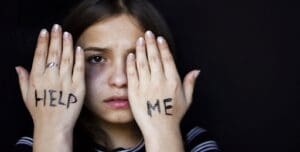Types of Child Abuse & Knowing the Signs

According to the World Health Organization (WHO) in January 2022, around 1 in 4 adults reports having been physically abused as a child. Data on sexual abuse can be particularly difficult to obtain due to the sensitive nature of the issue, and many cases go unreported. There is often a significant gap between the number of incidents and the number of reported cases.
Child abuse manifests in various forms, and it is crucial to identify the types and discern the signs to protect and provide support for children. The main types of child abuse include:
-
Physical Abuse:
-
-
- Signs: Unexplained injuries, bruises, fractures, burns, or welts on a child’s body. The child may be fearful of adults, aggressive, or overly withdrawn.
-
- Emotional or Psychological Abuse:
-
-
- Signs: Constant criticism, threats, rejection, belittling, or other behaviors that harm a child’s emotional well-being. The child may exhibit extremes in behavior, such as overly compliant or overly aggressive.
-
- Sexual Abuse:
-
-
- Signs: Sexualized behavior or knowledge beyond their age, fear of a particular person or reluctance to be alone with certain individuals, unexplained genital infections or injuries, and sudden changes in behavior.
-
- Neglect:
-
-
- Signs: Poor hygiene, unattended medical needs, malnutrition, lack of appropriate clothing for the weather, constant hunger, or frequent absence from school.
-
- Child Exploitation:
-
-
- Signs: Involvement in child labor, child trafficking, or using a child for the production of child pornography. Unexplained or sudden wealth, inappropriate clothing, or a child being accompanied by significantly older individuals may also be indicators.
-
- Educational Neglect:
-
-
- Signs: Chronic truancy, lack of involvement in education, or refusal to provide necessary educational resources.
-
- Medical Neglect:
-
-
- Signs: Failure to provide necessary medical or dental care, leading to untreated illnesses or conditions.
-
If you suspect child abuse, it is crucial to report it to the appropriate authorities, such as child protective services (CPS) or law enforcement, to ensure the safety and well-being of the child. If you are unsure, seek advice from professionals who can help assess the situation. Child abuse is a serious matter, and intervention can make a significant difference in a child’s life. You can also visit the Get Help tab on A4S. National Child Abuse Hotline: 1 (800) 422-4453.

